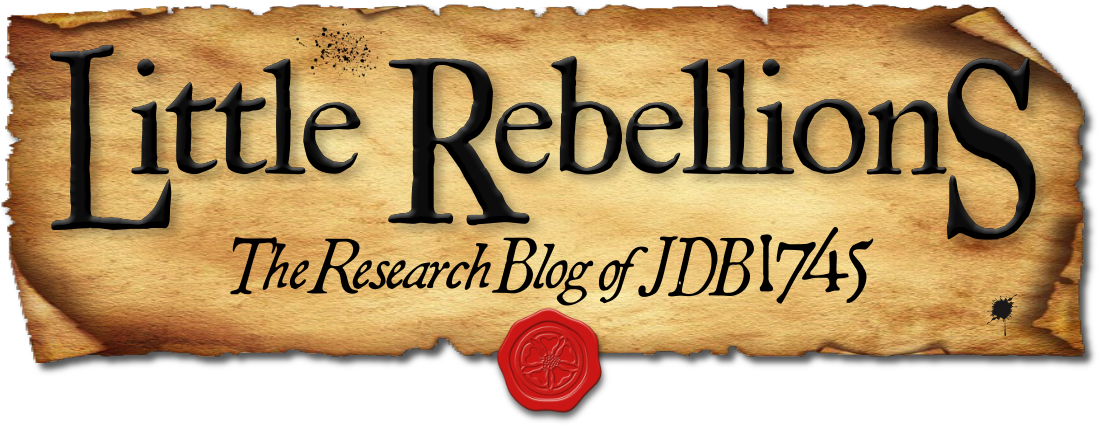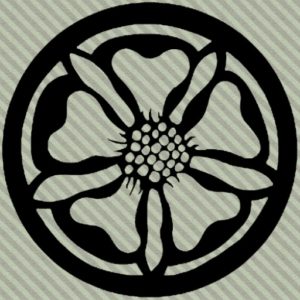Depending upon which contemporary account one reads, descriptions of the Jacobite army’s behaviour during the 1745 rising can paint a number of strikingly different pictures. Embellished narratives and biased propaganda on both sides of the conflict alternately portray Bonnie Prince Charlie’s troops as infantophagic savages who carved a trail of rapine and destruction through Britain, and a benevolent cadre of altruistic revolutionaries who only took what was freely given, while charming inhabitants in both village and burgh. The reality is, of course, somewhere in between, and eyewitness descriptions provide some validation to both characterisations, which are slanted according to who is telling the story.1 Less commonly explored, however, are the operational accounts of how the Jacobite army conducted itself administratively as it moved through towns in Scotland, solidifying control of ‘North Britain’ in the early months of the last rising. Some of these records, which feature guidelines and orders from Charles Edward Stuart himself about how to orchestrate an occupation, lie in numerous London archives amongst swathes of captured and intercepted Jacobite correspondence.
Tag: orders
Like many small towns in the path of the rapidly coalescing Jacobite army, the autumn of 1745 was an eventful one for the inhabitants of Coupar Angus. The annual drudgery of the harvest was interrupted across various regions of Forfarshire and Perthshire as swelling companies of rebel soldiers made their ways southward toward Edinburgh. In late September and early October, inhabited towns and villages along the army’s route were solicited by Jacobite recruiting parties looking for warm bodies to join the cause. Requisition officers wrote up strict demands for civic officials to provide supplies for the benefit of the Bonnie Prince’s war effort, and Gàidhlig-speaking strangers in Highland clothing were billeted in private homes without regard for the owners’ approval. Few political conversations occurred openly, as one never knew who was listening in. Clandestine meetings and furtive confabulation concerning treasonous topics were not uncommon occurrences in Coupar Angus, nor in any locality where Jacobite designs were taking shape.
According to the accounts of several common citizens throughout the rural Scottish Lowlands, this harvest season brought with it a palpable frisson that many regarded with equal parts excitement, trepidation, and ambivalence. Though the last Jacobite rising quickly gained momentum in its opening weeks, many participants knew even at that bullish time that success for Forty-five was by no means a sure thing. Matters were especially complicated for those who wanted to remain neutral or otherwise avoid being involved in such a dangerous gambit. And despite the profound vein of Jacobite support that ran through a broad range of disparate Northern Britons, the overwhelming majority of Scotland’s population was firmly set against the idea of a return to Divine Right monarchy under the Stuart kings.1
As Sheilings are only Sheds made in the hills to Herds, for herding Cattle in the Summer time, and not habitable in the Winter; consequently they are of no Importance; therefor it is required they may be destroyed and thrown down by the owners, so as they be no shelter to the Rebels; and that the owners may not plead Ignorance thereafter, and what ever houses have been burnt and destroyed are not to be rebuilt, without a Sign’d Order from the General or Commander in Chief. 1
Within the extensive annals of the Montrose Muniments at the NRS are three bundles of extremely interesting letters and lists that collectively provide a visceral, microcosmic snapshot of the last Jacobite rising in Scotland. After seeking permission directly from the standing duke of Montrose, for the past seven years I’ve been taken with transcribing the contents for inclusion within the database. During that time, the content has also provided some poignant content for my doctoral thesis, numerous lectures, and a forthcoming journal article.
Much of what is contained within these bundles highlights the uncomfortable predicament in which the then 2nd duke found himself: trying to maintain and defend the lives and homes of his contracted tenants – whether Jacobite or not – while upholding his duties and loyalties to the Georgian government of Britain, even through its heavy-handed tactics of rebel-purging after Culloden. In addition to some extremely tense back-and-forth correspondence between Montrose’s estate of Buchanan and the British military authorities based in Fort Augustus, the collection also contains lists of suspected rebels, declarations both for and against accused persons, and records of depredations carried out by King George’s troops throughout Montrose’s lands in the summer of 1746.
© 2025 Little Rebellions
Modified Hemingway theme by Anders Noren — Up ↑







